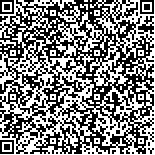| 引用本文: | 郝培君,张林祥,靳婉君,倪琳,邱国玉,翟玉生,雷春鸣,宋平顺.基于HPLC指纹图谱与指标性成分结合多元统计学对色选金银花等级的评价研究[J].中国现代应用药学,2023,40(19):2694-2701. |
| HAO Peijun,ZHANG Linxiang,JIN Wanjun,NI Lin,QIU Guoyu,ZHAI Yusheng,LEI Chunming,SONG Pingshun.Grade Evaluation of Color Sorting Lonicerae Japonicae Flos Based on HPLC Fingerprint and Index Components Combined with Multivariate Statistics[J].Chin J Mod Appl Pharm(中国现代应用药学),2023,40(19):2694-2701. |
|
| |
|
|
| 本文已被:浏览 1085次 下载 574次 |

码上扫一扫! |
|
|
| 基于HPLC指纹图谱与指标性成分结合多元统计学对色选金银花等级的评价研究 |
|
郝培君1, 张林祥1, 靳婉君2, 倪琳2, 邱国玉3, 翟玉生4, 雷春鸣4, 宋平顺2
|
|
1.甘肃中医药大学, 兰州 730030;2.甘肃省药品检验研究院, 国家中药材及饮片质量控制重点实验室, 甘肃省中藏药检验检测技术工程实验室, 兰州 730030;3.甘肃药业集团科技创新研究院有限公司 兰州 730030;4.通渭县清凉沅金银花产业扶贫开发有限公司, 甘肃 定西 743300
|
|
| 摘要: |
| 目的 建立色选金银花HPLC指纹图谱等级相关性评价及质量评价的方法,为色选金银花等级标准提供技术依据。方法 色谱柱:SVEA C18(250 mm×4.6 mm,5 μm);流动相为乙腈(A)-0.2%甲酸水溶液(B);梯度洗脱;进样体积10 μL;检测波长245 nm;体积流量0.5 mL·min-1;柱温38 ℃。采用中药色谱指纹图谱相似度评价系统(2012版)对HPLC图谱数据进行共有峰确定、相似度评价;采用CA、PCA与PLS-DA进行色选等级评价。采用中国药典2020年版一部测定质量控制指标,对数据进行综合统计分析。结果 指纹图谱共确定28个共有峰,指认7个成分,24批色选等级样品相似度为0.936~0.968。CA和PCA将28批金银花样品分为4类,与色选等级划分基本吻合,且PLS-DA实现了与色选等级划分十分吻合的判别结果。色选等级与金银花直径、开花率与破损率及木犀草苷含量呈负相关。色选等级与绿原酸、3,5-二-O-咖啡酰奎宁酸和4,5-二-O-咖啡酰奎宁酸呈正相关。色选金银花等级与所建立的指纹图谱整体上呈明显的关联性。色选等级金银花质量存在差异,在感官指标直径、开花率和破损率的基础上,木犀草苷的含量、直径开花率及破损率由高到低趋势为三级>二级>一级>特级,3种酚酸类含量由高到低趋势均为特级>一级>二级>三级,特级中3种酚酸类含量均是最高的。结论 结合木犀草苷含量和酚酸类含量作为色选等级评价和控制指标具有可行性、科学性,可以实现金银花等级的智能化色选等级生产。 |
| 关键词: 金银花 指纹图谱 聚类分析 质量评价 等级标准 |
| DOI:10.13748/j.cnki.issn1007-7693.20223295 |
| 分类号:R917 |
| 基金项目: |
|
| Grade Evaluation of Color Sorting Lonicerae Japonicae Flos Based on HPLC Fingerprint and Index Components Combined with Multivariate Statistics |
|
HAO Peijun1, ZHANG Linxiang1, JIN Wanjun2, NI Lin2, QIU Guoyu3, ZHAI Yusheng4, LEI Chunming4, SONG Pingshun2
|
|
1.Gansu University of Traditional Chinese Medicine, Lanzhou 730030, China;2.Gansu Provincial Institute of Pharmaceutical Inspection, National Key Laboratory for Quality Control of Chinese Medicinal Materials and Pieces, Gansu Provincial Engineering Laboratory for Testing Technology of Chinese and Tibetan Medicines, Lanzhou 730030, China;3.Gansu Pharmaceutical Group Science and Technology Innovation Research Institute Limited, Lanzhou 730030, China;4.Tongwei County Qingliang Yuan Honeysuckle Industry Poverty Alleviation Development Co., Ltd., Dingxi 743300, China
|
| Abstract: |
| OBJECTIVE To establish the correlation evaluation and quality evaluation method of HPLC fingerprint grade of color sorting Lonicerae Japonicae Flos, and provide technical basis for the grade standard of color sorting Lonicerae Japonicae Flos. METHODS The chromatographic column was SVEA C18(250 mm×4.6 mm, 5 μm); mobile phase was acetonitrile(A)- 0.2% formic acid aqueous solution(B); gradient elution; injection volume was 10 μL; detection wave length was 245 nm; volume flow rate was 0.5 mL·min-1; column temperature was 38 ℃. The common peak determination and similarity evaluation of HPLC chromatogram data were carried out by using the Similarity Evaluation System of Traditional Chinese Medicine Chromatographic Fingerprints(Version 2012); the color sorting grade evaluation was carried out by CA, PCA and PLS-DA. The first part of Chinese Pharmacopoeia 2020 Edition was used to measure the quality control indicators, and the data were analyzed comprehensively. RESULTS A total of 28 common peaks were identified in the fingerprints, and 7 components were identified. The similarity of 24 batches of color sorting grade samples was 0.936-0.968. CA and PCA divided 28 batches of Lonicerae Japonicae Flos samples into 4 categories, which were basically consistent with the classification of color sorting, and PLS-DA achieved a discrimination result that was very consistent with the classification of color sorting. The color sorting grade was negatively correlated with the diameter, flowering rate, damage rate, and luteolin content of Lonicerae Japonicae Flos. The color sorting grade was positively correlated with chlorogenic acid, 3,5-di-O-caffeoyl quinic acid and 4,5-di-O-caffeoyl quinic acid. There was a clear correlation between the color sorting of Lonicerae Japonicae Flos and established fingerprint overall. There were differences in the quality of Lonicerae Japonicae Flos in the color sorting grade. Based on the sensory indicators of diameter, flowering rate, and damage rate, the content, diameter, flowering rate, and damage rate of luteolin showed a trend from high to low, ranging from third grade>second grade>first grade>special grade. The content of three phenolic acids showed a trend from high to low, ranging from special grade>first grade>second grade>third grade. Among the special grade, the content of three phenolic acids was the highest. CONCLUSION Combining the content of luteolin and phenolic acids as evaluation and control indicators for color selection grade is feasible and scientific, which can achieve intelligent color sorting grade production of Lonicerae Japonicae Flos grade. |
| Key words: Lonicerae Japonicae Flos fingerprint cluster analysis quality evaluation grade standard |
|
|
|
|
